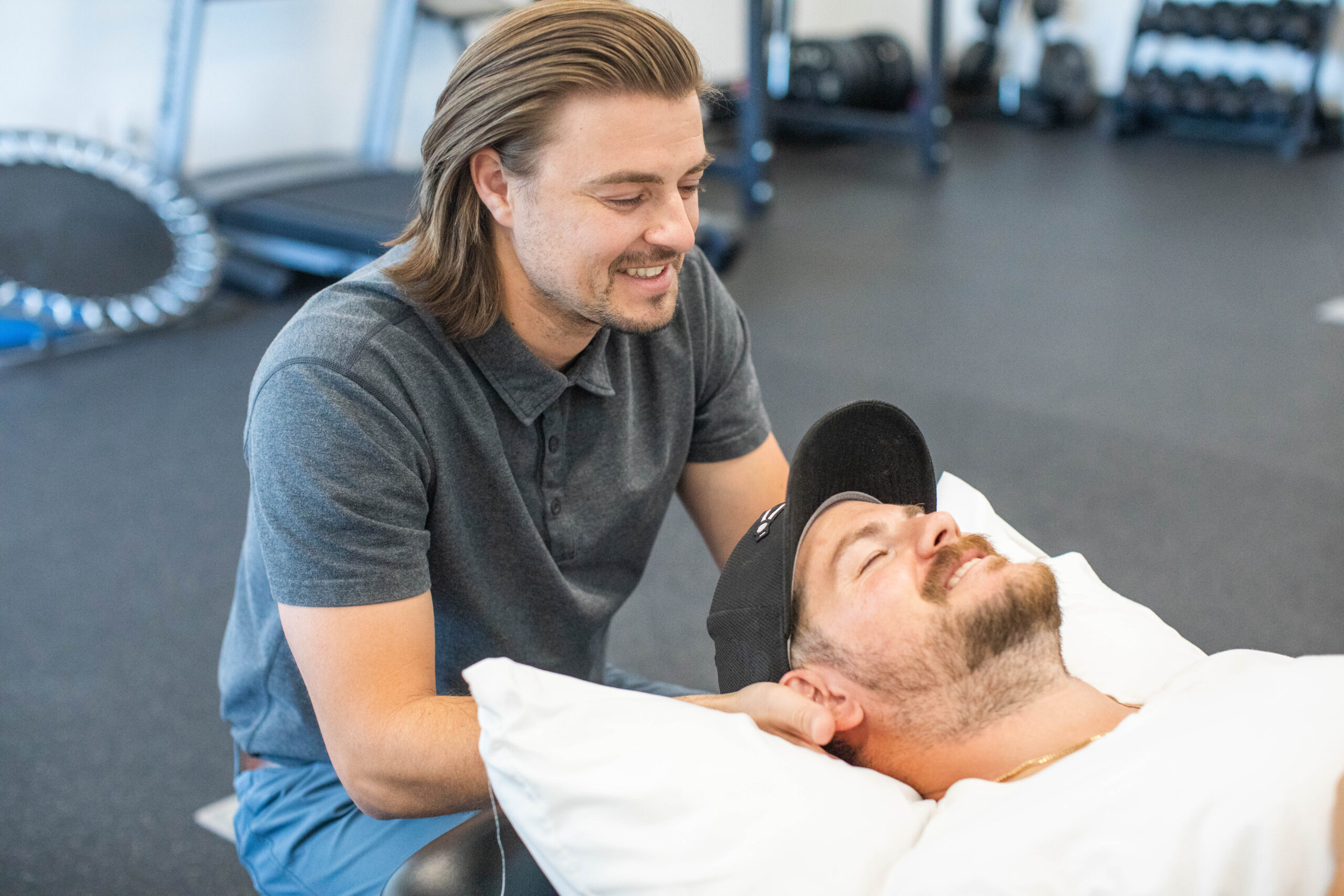What Causes Vertigo?
Have you ever woken up and felt like you were on a roller coaster? Have you wondered why? Or, what causes that sensation? Today, we will explore the cause and treatment options for Benign Paroxysmal Positional Vertigo or BPPV.
Understanding BPPV: The Most Common Cause of Vertigo
BPPV is responsible for about 80% of all vertigo cases, making it the leading cause of that spinning, dizzy sensation many people experience. The condition occurs when tiny calcium crystals in your inner ear become dislodged and move into the wrong part of your ear canal. These crystals, called otoconia, normally help your brain understand your head’s position in space. When they move where they shouldn’t be, they send confusing signals to your brain about your body’s movement and position.
What Triggers BPPV Episodes?
BPPV episodes are typically triggered by specific head movements or position changes. Common triggers include:
Rolling over in bed, especially when turning to one side. Getting up quickly from lying down. Tilting your head back to look up at something high. Bending forward and then straightening up. These movements cause the displaced crystals to shift, creating that sudden spinning sensation that can last anywhere from a few seconds to a couple of minutes.
Recognizing the Symptoms
While the main symptom of BPPV is vertigo, patients often experience additional symptoms including nausea or vomiting during episodes, a feeling of being off-balance or unsteady, lightheadedness, and in some cases, involuntary eye movements called nystagmus. It’s important to note that BPPV episodes are typically brief but intense, and symptoms usually subside when your head stops moving.
Who Is at Risk?
BPPV can affect anyone, but certain factors increase your likelihood of developing the condition. Age is a significant factor, as people over 50 are more commonly affected due to natural aging of the inner ear structures. Women are twice as likely as men to develop BPPV, particularly after menopause. Previous head injuries, prolonged bed rest, or inner ear infections can also increase your risk.
How Physical Therapy Can Help
Physical therapy offers highly effective treatment for BPPV through specialized techniques called canalith repositioning procedures. The most common and successful treatment is the Epley maneuver, which involves a series of specific head and body position changes designed to move the displaced crystals back to their proper location in your inner ear.
During your physical therapy evaluation, your therapist will perform tests to determine which ear canal is affected and which specific repositioning technique will be most effective for your case. Many patients experience significant improvement or complete resolution of symptoms after just one or two treatment sessions.
What to Expect During Treatment
Your physical therapist will guide you through gentle, controlled movements while monitoring your symptoms and eye movements. The treatment is performed on a treatment table, and while you may experience temporary dizziness during the procedure, this indicates that the crystals are moving back to their correct position.
Following your treatment session, your therapist may provide you with specific instructions for sleeping positions and activities to avoid for the next day or two to prevent the crystals from becoming displaced again.
Prevention and Home Management
While BPPV can sometimes recur, there are steps you can take to reduce your risk. Your physical therapist may teach you home exercises called Brandt-Daroff exercises that can help prevent future episodes. Additionally, staying hydrated, getting adequate sleep, and moving your head through its full range of motion regularly can help maintain healthy inner ear function.
When to Seek Professional Help
If you’re experiencing recurring episodes of vertigo, especially those triggered by head movements, it’s important to seek professional evaluation. While BPPV is generally not dangerous, proper diagnosis and treatment can significantly improve your quality of life and reduce your risk of falls or injuries during dizzy episodes.
At our physical therapy clinic, we specialize in vestibular rehabilitation and have successfully treated hundreds of patients with BPPV. Our experienced therapists use evidence-based techniques to provide effective, lasting relief from vertigo symptoms.
Don’t let vertigo keep you from enjoying your daily activities. Contact us today to schedule an evaluation and take the first step toward getting back on solid ground.

